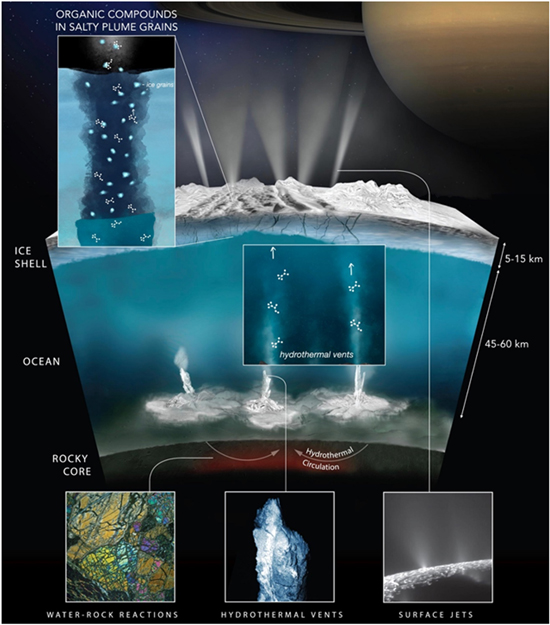Orbiting just outside of Saturn's blazing rings is Enceladus, the tiny ocean moon. It's just 500 kilometres across, but harbours at least 10 kilometres of liquid water ocean under its icy shell.
We know that because we've tasted it—robotically at least—and found traces of a rocky core below, where chemical reactions form all manner of complex, heavy molecules. We've even found the building blocks of amino acids, a cornerstone of life on Earth.
Everything we know about Enceladus we learned from Cassini, but that spacecraft wasn't designed to search for life.
That's why we need more missions, like the proposed Enceladus Life Finder (ELF) or Enceladus Life Signatures and Habitability (ELSAH).
Here's hoping we get back there soon.

Further reading and sources:
Enceladus: Ocean Moon over at NASA Solar Sysem Exploration.
The Science Case for a Return to Enceladus at IOPScience.


